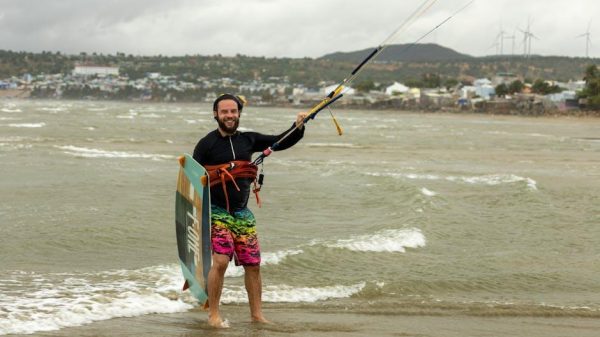In recent years, the surge in popularity of extreme sports films has captivated audiences worldwide, offering an adrenaline-fueled escape into the realm of human daring and resilience. These cinematic spectacles, characterized by breathtaking visuals and heart-stopping feats, have not only pushed the boundaries of filmmaking but have also sparked a contentious debate: are these films merely showcasing human potential, or are they inadvertently glorifying perilous behavior? As the line between admiration and emulation blurs, it becomes imperative to scrutinize the cultural and psychological impact of these films. This article delves into the complex interplay between cinematic artistry and viewer perception, evaluating whether extreme sports films inspire healthy ambition or promote hazardous mimicry. Through an analytical lens, we will explore the motivations behind these films, the responsibilities of filmmakers, and the influence they wield over impressionable audiences.
Impact of Extreme Sports Films on Public Perception of Risk
The portrayal of extreme sports in films has undeniably shaped how audiences perceive risk and adventure. These cinematic experiences often highlight breathtaking feats, showcasing athletes pushing the limits of human capability. While this can inspire admiration and awe, it also raises concerns about the potential glorification of perilous behavior. Extreme sports films frequently emphasize the thrill and adrenaline rush, sometimes overshadowing the associated dangers. The narrative often focuses on the triumphs, leaving out the harsh realities of injuries and fatalities. As a result, viewers may develop a skewed understanding of the true risks involved, potentially leading to increased participation without adequate preparation.
- Highlighting Success: Films tend to spotlight successful stunts and achievements, which can create a misleading perception that such outcomes are the norm.
- Underplaying Consequences: The consequences of failure, such as serious injury or death, are often downplayed or omitted entirely.
- Inspiring Recklessness: By glamorizing risk-taking, these films may inadvertently encourage audiences to attempt similar feats without understanding the full scope of danger.
It’s essential for filmmakers to balance the awe-inspiring elements of extreme sports with a responsible depiction of the risks involved. By doing so, they can contribute to a more informed public perception, ensuring that admiration for these athletes does not translate into reckless imitation.

Analyzing the Psychological Appeal of High-Risk Activities in Cinema
High-risk activities in cinema often tap into a deep-seated psychological allure, drawing audiences with the promise of adrenaline and the thrill of danger. These films leverage the human fascination with the forbidden and the extreme, creating a vicarious experience that allows viewers to flirt with peril from the safety of their seats. This allure is not merely about the adrenaline rush; it is intertwined with the complex psychological dynamics of risk-taking, such as the pursuit of identity, self-affirmation, and the challenge of overcoming one’s limitations. By showcasing characters who engage in extreme sports, these films often emphasize themes of courage, rebellion, and the defiance of societal norms, resonating with audiences who yearn for freedom and self-expression.
- Adrenaline and Excitement: Films often highlight the rush associated with high-risk activities, appealing to the audience’s desire for excitement.
- Identity and Self-Discovery: Characters in these films frequently embark on personal journeys, using extreme sports as a means to explore their own.
- Rebellion Against Norms: The portrayal of defying conventional boundaries can be a powerful draw for viewers who feel constrained by societal expectations.
While the psychological appeal is undeniable, the potential glorification of dangerous behavior raises ethical concerns. Filmmakers walk a fine line between celebrating the human spirit’s indomitable will and inadvertently encouraging reckless behavior. The narrative context and the portrayal of consequences play a crucial role in determining whether these films serve as an inspirational testament to human resilience or as a perilous glorification of risk.

Balancing Entertainment and Responsibility: Ethical Considerations for Filmmakers
In the realm of extreme sports films, filmmakers often face the intricate challenge of presenting thrilling content without inadvertently promoting reckless behavior. While these films capture breathtaking feats and push the boundaries of human capability, ethical responsibility demands a careful consideration of the messages being conveyed. It’s crucial for filmmakers to strike a balance between showcasing the exhilarating aspects of extreme sports and acknowledging the inherent risks involved. This involves a nuanced approach that neither glamorizes perilous stunts nor diminishes the skill and preparation required to execute them safely.
To address these concerns, filmmakers can adopt several strategies:
- Highlighting Training and Safety: Include segments that focus on the extensive training and safety measures athletes undertake, emphasizing the importance of preparation.
- Presenting Consequences: Show the potential dangers and consequences of extreme sports to provide a realistic perspective, avoiding the portrayal of invincibility.
- Incorporating Expert Commentary: Feature insights from professionals and experts to provide a balanced view on the risks and rewards of the sport.
By incorporating these elements, filmmakers can craft narratives that are both captivating and responsible, ensuring that the excitement of extreme sports is not overshadowed by the glorification of hazardous behavior.

Guidelines for Creating Responsible Narratives in Extreme Sports Documentaries
When crafting narratives around extreme sports, filmmakers hold a significant responsibility in shaping how audiences perceive risk and adventure. To ensure that these documentaries do not inadvertently glorify perilous behavior, creators should adhere to several essential guidelines. Transparency is crucial; filmmakers must provide clear context about the level of skill, preparation, and potential hazards involved. This includes acknowledging the inherent risks and the meticulous planning that often goes unnoticed by the audience.
Balanced storytelling is key to presenting a comprehensive view of extreme sports. Documentaries should strive to include perspectives from a diverse range of voices, such as athletes, safety experts, and medical professionals. Filmmakers should also consider the following elements:
- Realistic portrayal of consequences: Highlight the potential dangers and real-life outcomes, including injuries and fatalities.
- Ethical representation of athletes: Avoid sensationalizing or heroizing individuals who engage in reckless behavior without appropriate preparation.
- Inclusion of safety measures: Demonstrate the importance of training, equipment, and contingency planning.
By adhering to these guidelines, filmmakers can create responsible narratives that inspire and educate without promoting unnecessary risk-taking.










